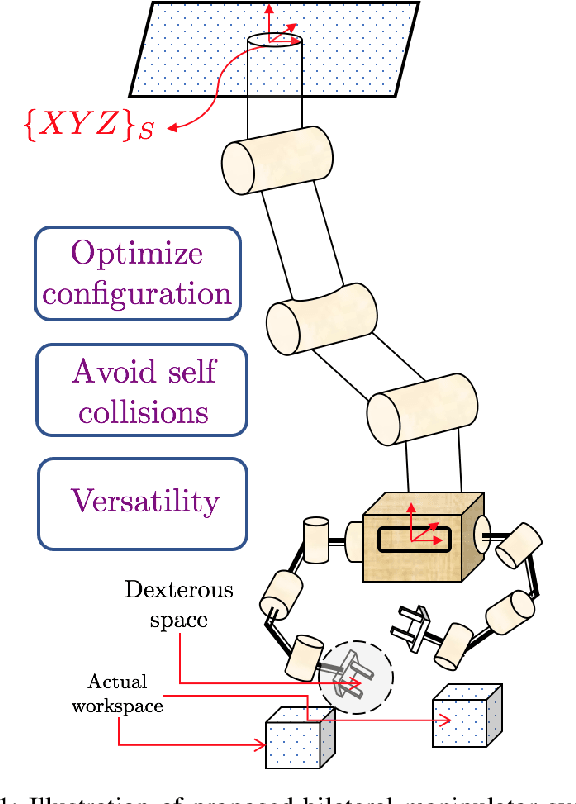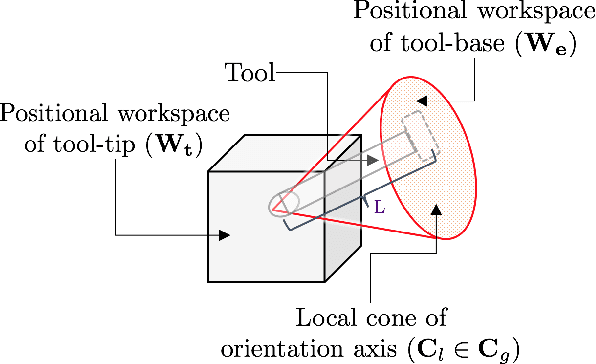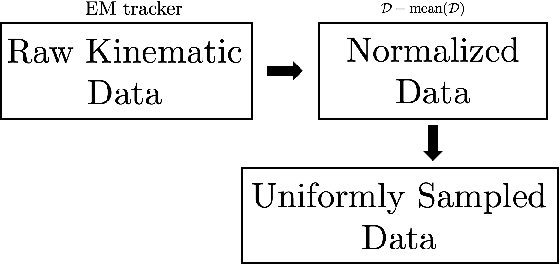Anthony Barnum
Design-Informed Kinematic Control for Improved Dexterous Teleoperation of a Bilateral Manipulator System
May 02, 2020



Abstract:This paper explores the possibility of improving bilateral robot manipulation task performance through optimizing the robot morphology and configuration of the system through motion. To optimize the design for different scenarios, we select a set of tasks that represent the variability in small scale manipulation (e.g. pick and place, tasks involving positioning and orientation) and track the motion to obtain a reproducible trajectory. Kinematic data is captured through an electromagnetic (EM) tracker system while a human subject performs the tasks. Then, the data is pre-processed and used to optimize the morphology of each symmetric robot arm of the bilateral system. Once optimized, a kinematic control scheme is used to generate a motion with dexterous configurations. The dexterity is evaluated along the trajectories with standard dexterity metrics. Results show a 10\% improvement in dexterous maneuverability with the optimized arm design and optimal base configuration.
 Add to Chrome
Add to Chrome Add to Firefox
Add to Firefox Add to Edge
Add to Edge